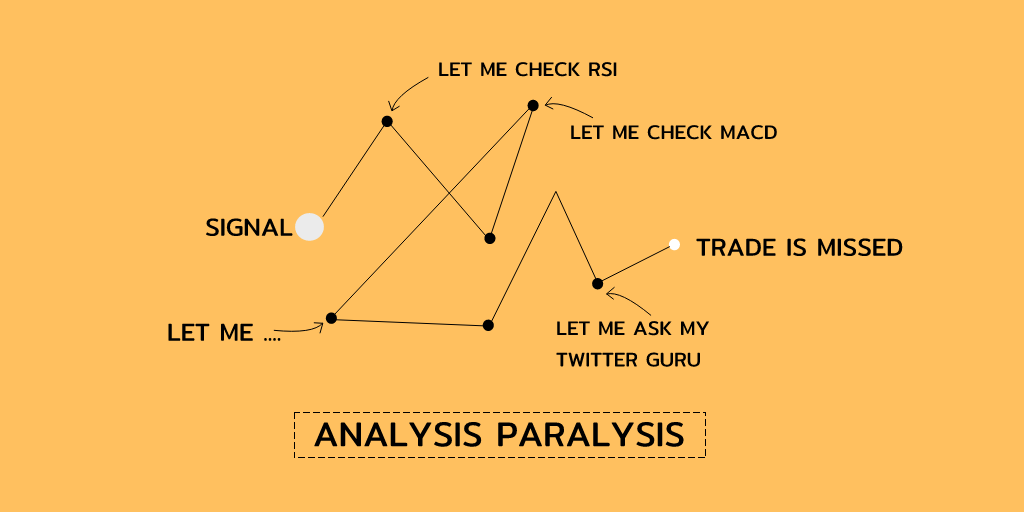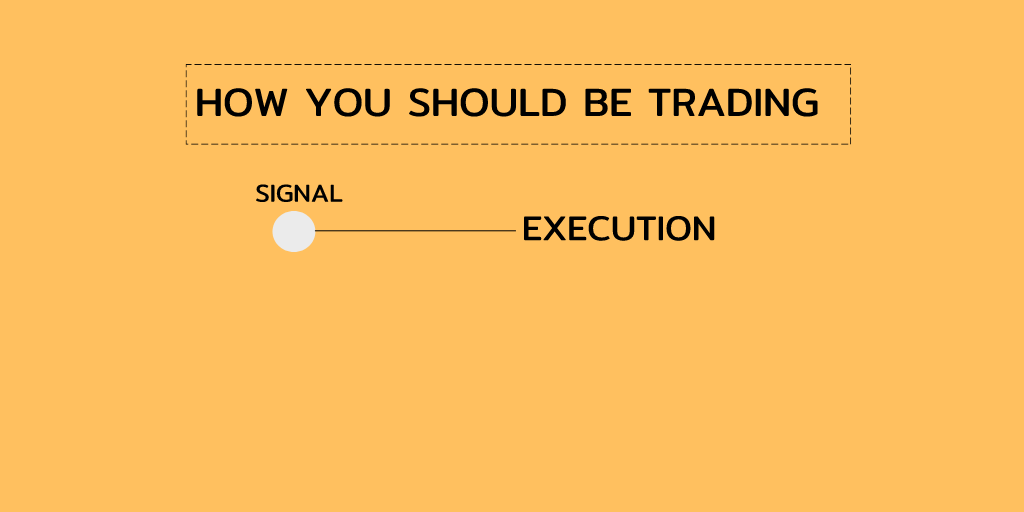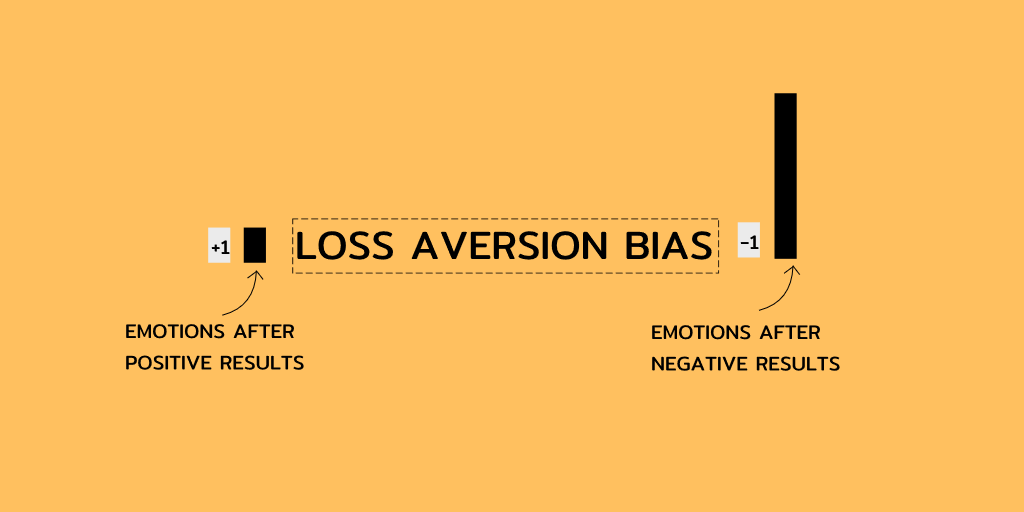
The four stages of markets-
1. Accumulation
2. Markup
3. Distribution
4. Decline
Thread-
1. Accumulation
2. Markup
3. Distribution
4. Decline
Thread-
1. Accumulation phase-
This phase starts after the completion of a downtrend.
In this phase the furious selling activity of downtrend comes to a rest.
During this phase there is a gradual shift from sellers to a more neutral environment .
This phase starts after the completion of a downtrend.
In this phase the furious selling activity of downtrend comes to a rest.
During this phase there is a gradual shift from sellers to a more neutral environment .
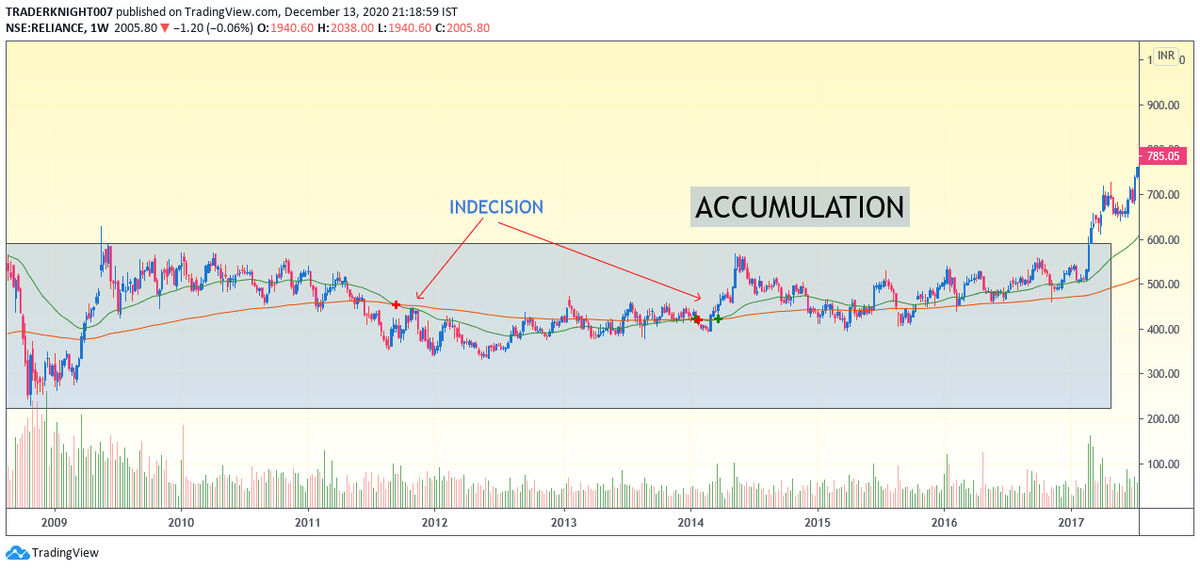
Institutions starts to show interest in stock, Because they can not buy the stock in one time ;they buy it slowly over a long period of time.
Sometimes it takes years for a stock to come out of this phase.
Sometimes it takes years for a stock to come out of this phase.
The easiest way to recognize if a stock is in this phase is that the Longer term moving averages will start go decline even when the stock bounce higher.
This shows that there is indecision and there is no powerful force present In the stock at this time.
This shows that there is indecision and there is no powerful force present In the stock at this time.
But, Its super risky to buy in this phase because it can also be a second distribution zone , and the stock may again go lower in many cases.
The first signs of an accumulation zone is the stock will try to make higher lows and try not to break the swing lows often .
The first signs of an accumulation zone is the stock will try to make higher lows and try not to break the swing lows often .

2. Markup or Advance phase-
In this phase the stock breaks out of the accumulation zone and the volumes starts to go higher with the price.
The stock will make higher highs and higher lows and the longer term moving averages will again starts to go higher.
In this phase the stock breaks out of the accumulation zone and the volumes starts to go higher with the price.
The stock will make higher highs and higher lows and the longer term moving averages will again starts to go higher.

The fear of missing out makes people chase the stock at high prices and the stock inches even higher.
The short sellers in fear cut their positions and the stock moves with a higher pace this is also called short squeeze.
The short sellers in fear cut their positions and the stock moves with a higher pace this is also called short squeeze.
In this phase the up-moves come with high volumes and the down-moves come with low volumes.
3.Distribution phase-
In this phase the buyers are no longer motivated to chase the stock at higher prices and the down moves starts to come with more volumes.
3.Distribution phase-
In this phase the buyers are no longer motivated to chase the stock at higher prices and the down moves starts to come with more volumes.

In this phase the intermediate term moving averages cross down the longer term moving averages, this shows that there is indecision.
This is the gradual shift of control from buyers to sellers.
Volatility is highest in this phase, with down moves having higher volumes.
This is the gradual shift of control from buyers to sellers.
Volatility is highest in this phase, with down moves having higher volumes.
But not always this is a distribution phase, sometimes the stock breaks above this zone and again starts to move ,
So till the stock is above the longer term moving averages the benefit of doubt should continue to go to buyers.
So till the stock is above the longer term moving averages the benefit of doubt should continue to go to buyers.
Tops are formed a little faster then the bottoms , so the distributions happens faster then the accumulation.
It is said that The bigger the top the bigger the top, so the more time a technical formation takes the bigger is the move.
The stock starts to move in LH-LL formations
It is said that The bigger the top the bigger the top, so the more time a technical formation takes the bigger is the move.
The stock starts to move in LH-LL formations
4. Decline phase-
For most people this is the hard part, because the traders are more reluctant to take short trades as compared to the buying trades.
That’s why you see the falls are typically bigger and faster then the
Rallies in a bull market.
For most people this is the hard part, because the traders are more reluctant to take short trades as compared to the buying trades.
That’s why you see the falls are typically bigger and faster then the
Rallies in a bull market.
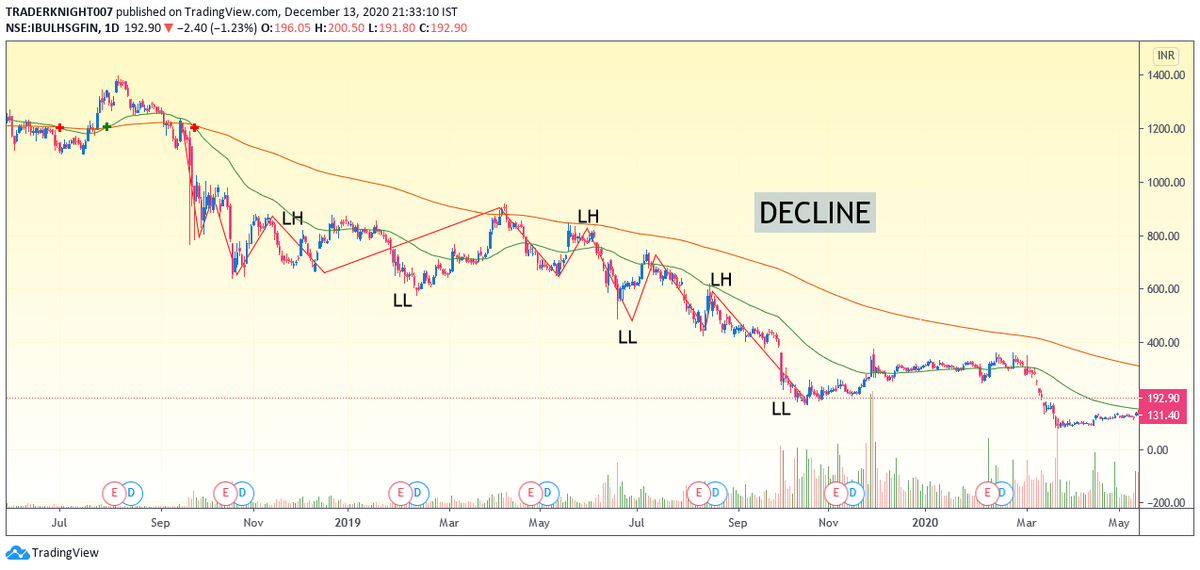
This is an emotional period for most people and favourite time of pessimists.
Short selling adds fuel to the already over supply and the stocks fall with full pace.
But the most brutal bounces also comes in this phase,
Short selling adds fuel to the already over supply and the stocks fall with full pace.
But the most brutal bounces also comes in this phase,
even bigger then the bull markets, so we have to take shorts with care.
Positive news pullbacks will fade quickly during this phase.
During this phase people are hoping for the prices to move up and the fundamentals will not be as bad as the stock condition.
Positive news pullbacks will fade quickly during this phase.
During this phase people are hoping for the prices to move up and the fundamentals will not be as bad as the stock condition.
Some buyers come and say, Aur kitna girega , and trap themselves fueling the down-move even more.
And again this phase ends with higher volatility and stock will make higher lows but not higher highs, and will go in the accumulation phase.
And again this phase ends with higher volatility and stock will make higher lows but not higher highs, and will go in the accumulation phase.
• • •
Missing some Tweet in this thread? You can try to
force a refresh

